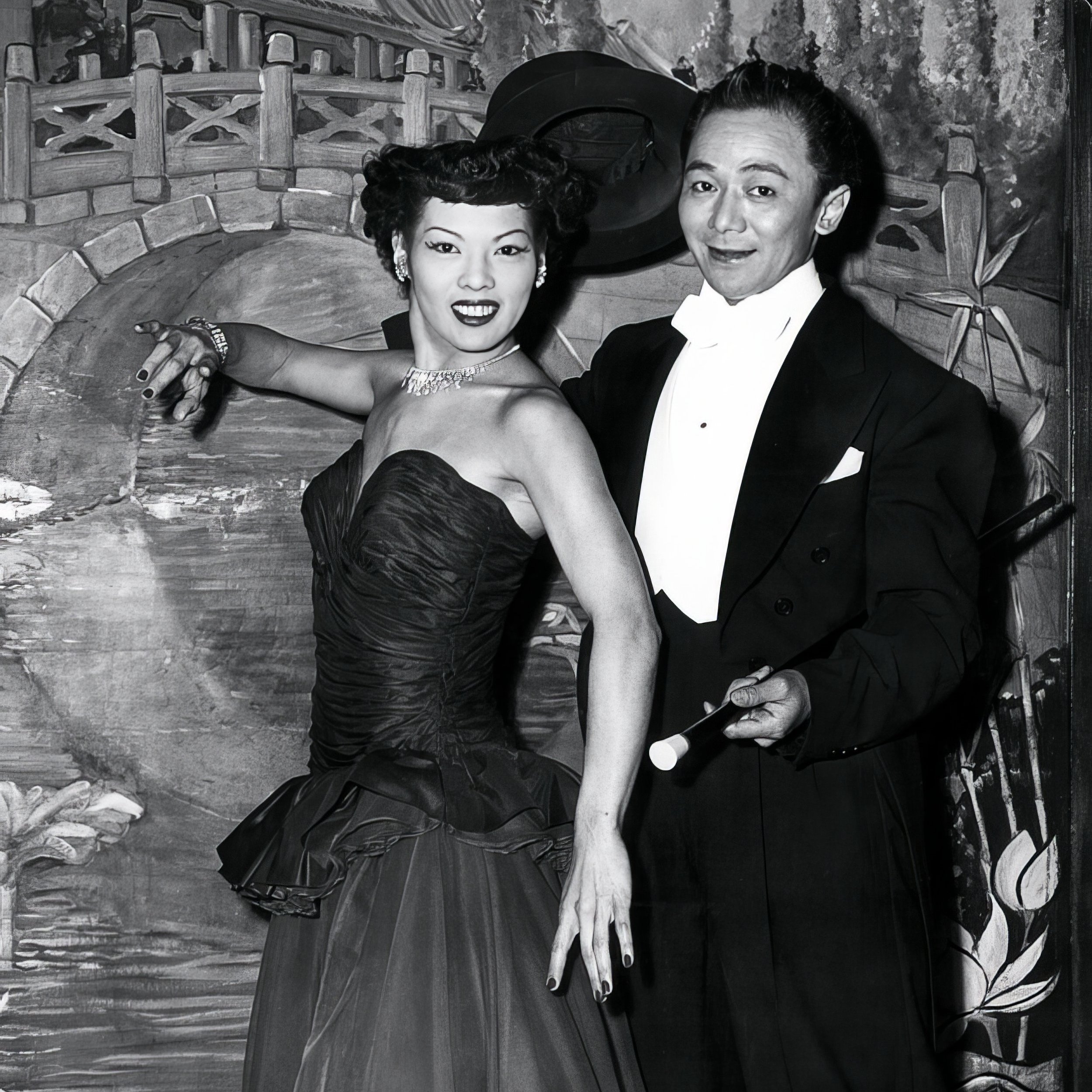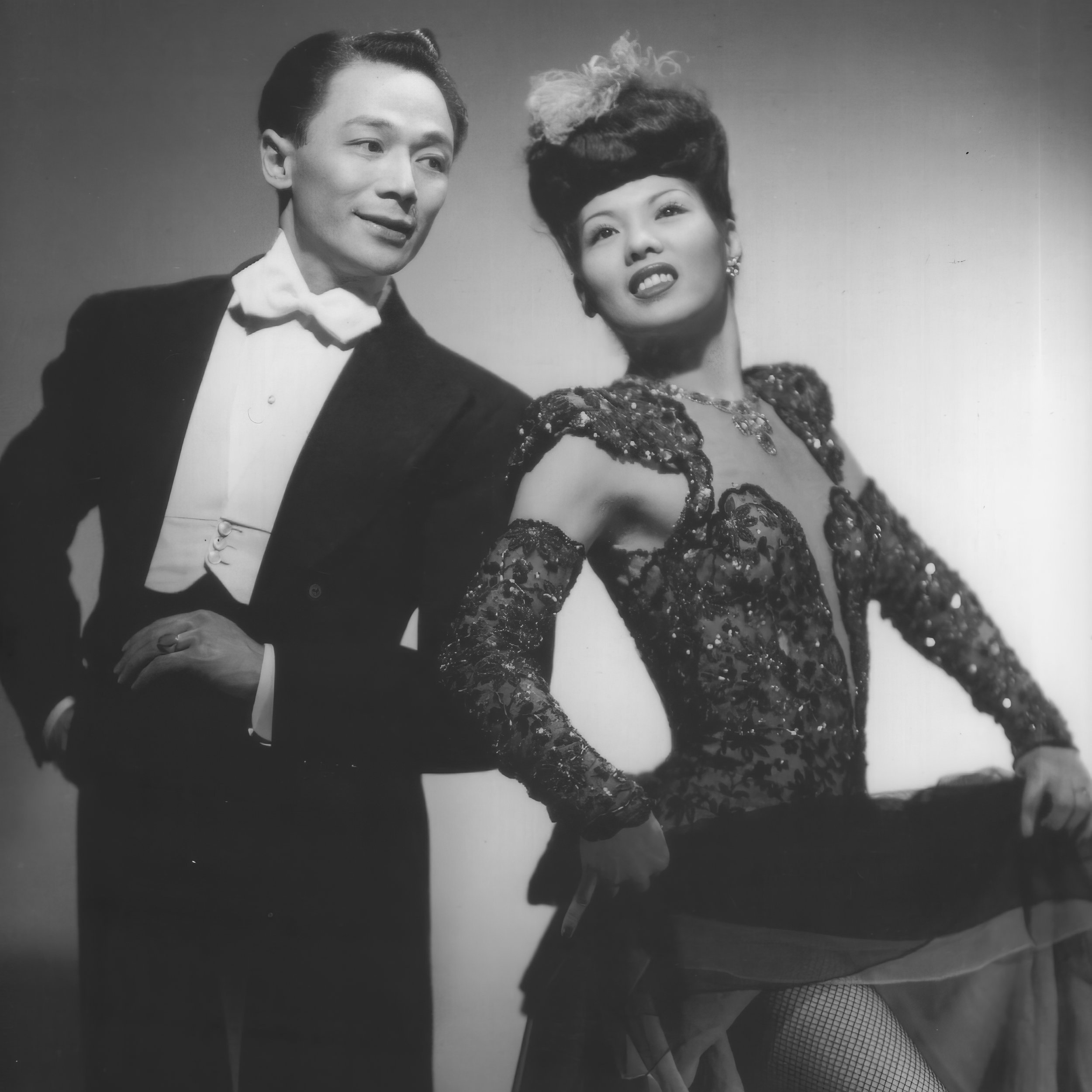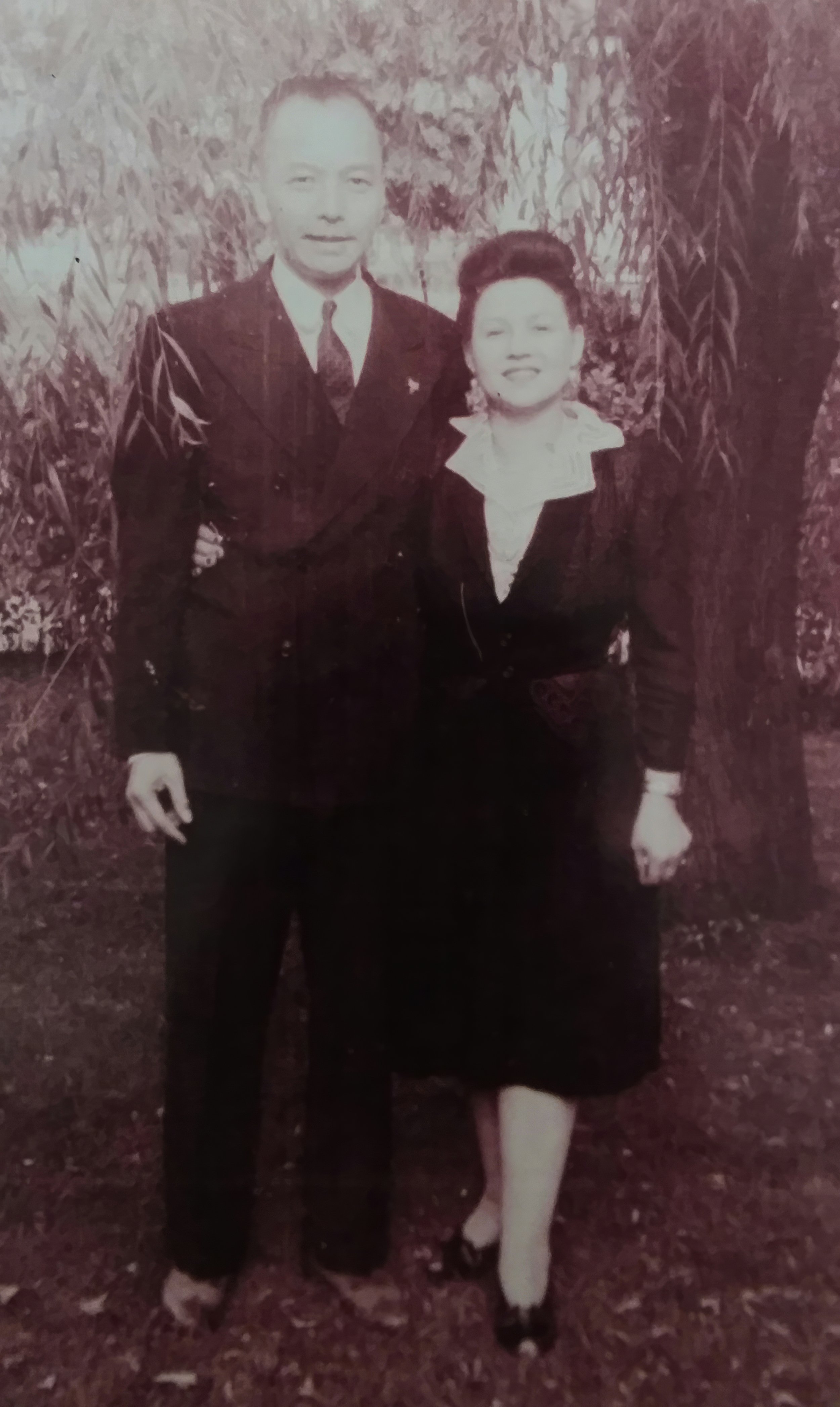Dive into the World of BLENDED 和 (HARMONY)
Suzie Juul, Morgan Kempton, Kelsey Angel Baehrens, & Audrey Mojica, the actors who play the four Kim Loo Sisters in Blended 和 (Harmony). Photo by Rich Ryan.
Jessica Huang and Jacinth Greywoode’s Blended 和 (Harmony): The Kim Loo Sisters was created after years of researching not only these women and their family but the sociopolitical context during the 1920s, ‘30s, and ‘40s. Scroll down or use the interactive table of contents to learn more, and don’t forget to buy tickets now through May 26 to our world premiere co-production with History Theatre, directed by Mu artistic director Lily Tung Crystal.
ASIAN AMERICAN ENTERTAINERS WERE GROUNDBREAKING ENTERTAINERS
Before the Kim Loo Sisters were the first Asian American act to star in a Broadway musical, they performed alongside many talented performers of the “Chop Suey Circuit,” a nickname for the informal network of nightclubs and supper clubs featuring Asian and Asian American entertainers during the vaudeville and swing era.
LEE TUNG FOO
Lee Tung Foo (aka Frank Lee) was a vaudeville singer and film actor whose career spanned decades between 1905 and 1962. Born in California in 1875, Lee was encouraged by his employers to study music and later trained by Margaret Blake-Alverson. His performances on the vaudeville stage fused yellowface caricature with operatic and popular songs, ethnic impersonations, and comedic patter. Although formally trained by a professional singer, Lee’s fine performances were presented as a novelty and demonstration of the model minority myth, “the first Chinaman with a singing voice.”
DOROTHY TOY & PAUL WING
Dorothy Toy (born Shigeko Takahashi) and Paul Wing (born Paul Wing Jew) were a tour de force tap dance duo in the 1930s thru 1950s. The first Asian Americans to enter the American tap dance scene, they were billed as the “Chinese Fred Astaire and Ginger Rogers” and toured coast to coast, performing on Broadway and at the London Palladium. In Hollywood, they also appeared in films like Deviled Ham and Happiness Ahead.
MARY MON TOY
Mary Mon Toy (born Mary Teruko Watanabe) began her career at the Juilliard School after leaving the Minidoka concentration camp, where she had been incarcerated during WWII. Like many Nisei artists, she changed her name to hide her Japanese ancestry. In 1946, she joined the showgirl chorus at China Doll Club in Times Square, and she soon rose from chorus line to headliner. She made her Broadway debut in the ground-breaking show House of Flowers and found her breakout role as Minnie Ho in The World of Suzie Wong in 1958.
Though Mary Mon Toy masked her Japanese identity for the rest of her life, she continued to advocate for Asian American entertainers and against yellowface casting throughout her career.
Photos courtesy California State Library (Lee Tung Foo), Dorlie Fong (Dorothy Toy & Paul Wing), & Marnie Mueller (Mary Mon Toy)
A Brief Timeline
During the Kim Loo Sisters’ heyday, anti-Asian discrimination was systemic through government policies such as the Chinese Exclusion Act and Executive Order 9066, as well as industry guidelines such as the Hays Code. Even without these clear signs marking Asian Americans as “other” in the eye of mainstream America, representation in media and entertainment was limited to stereotypes or, at best, being praised as the “Asian version” of a White counterpart.
1880
1900
1920
1930
1940
THE CHINESE EXCLUSION ACT 1882-1943
The act bans Chinese workers from entering the country and excludes Chinese immigrants from US citizenship. Beginning under President Arthur’s tenure, it is renewed every 10 years until 1943.
1907
Shear Gim Louie moves from Toisan, China, to the US as a paper son: someone who purchases documents stating they are related to a US citizen.
1910
Michelena Wojcik moves from Buczacz, Poland, to the US to join her sister.
1919
The Nankin Café opens in downtown Minneapolis, featuring elaborate decoration and a dance floor.
THE KIMMIE’S FIRST SHOWS 1926-1937
The Louie children—the four Kim Loo Sisters and siblings Lowell and Nerée—begin performing in Charlotte’s Chinese Kiddie Revue. They become Louie’s Chinese Revue in 1929 and continue to tour the central and western vaudeville circuits for the next eight years.
In 1937, Nerée and Lowell are sent home to Minneapolis to live with their father, Shear Gim. Mama Lena and the four older sisters reshape their individual vaudeville routines and become a vocal swing quartet.
1926
Chinese nationalist leader Sun Yat-sen dies. Chiang Kai-shek becomes the head of the military and in subsequent years, brings most of China under the control of the nationalist Kuomintang (KMT) government.
1927
Civil War in China breaks out between the Nationalists and the Communists.
1931
The Empire of Japan invades Manchuria, beginning a war with the Republic of China and initiating WWII in Asia.
THE HAYS CODE 1934-1968
The Hays Code explicitly forbids the depiction of miscegenation in motion pictures. Because interracial marriage is still banned in 30 states, its depiction in film would imply the condoning of an illegal act. Even when the story does not depict an interracial relationship, the Hays Code is used to prevent two actors of different races from performing opposite each other in a romantic or marital context.
1937-1938
Japan occupies Nanking, causing an estimated 260,000 Chinese civilian casualties.
1939
The Kimmies are booked in George White’s Scandals on Broadway
1939
Poland is invaded by Nazi Germany on September 1 and the Soviet Union on September 17. Over five million Polish citizens died as a result of German occupation, and approximately 150,000 more died due to Soviet occupation, with hundreds of thousands more deported.
THE THREE KIM LOO SISTERS 1940-1945
Jenée leaves the act. Alice, Maggie, and Bubbles go on to perform in a number of Broadway revues, including Hollywood Sweater Girls and Hellzapoppin.
WWII & ASIAN AMERICANS 1941-1946
On Dec 7, 1941, the Japanese bomb Pearl Harbor, Hawai’i. The US joins WWII. Two months later, President Franklin D. Roosevelt issues Executive Order 9066, forcing more than 120,000 Japanese Americans living on the West Coast into concentration camps.
1944
The Kimmies join the USO and ship out to the Mediterranean Theater of Operations to entertain the troops. The Kim Loo Sisters appear in the Hollywood movie, Meet Miss Bobbie Socks.
1945
Shear Gim and Michelena Louie become US citizens.
1945
End of WWII. Nazi Germany is defeated in Poland, but the country remains under the influence of the Soviet Union.
1946
The last US concentration camp holding Japanese Americans is closed.
1946 - 1949
Chinese civil war between the Nationalists and the Communists ends with the Communist victory and the establishment of the People’s Republic of China in 1949.
Introducing Louie's Chinese Revue
LEARN MORE
Just Us Girls: The Kim Loo Sisters by Leslie Li (amazon.com)
Race in American Musical Theater by Josephine Lee (bloomsbury.com)
Forbidden City, USA: Chinese American Nightclubs, 1936-1970, a documentary film by Arthur Dong (deepfocusproductions.com)
Yellowface: Creating the Chinese in American Popular Music and Performance, 1850s-1920s by Krystyn Moon (rutgersuniversitypress.org)
KIM LOO SISTERS TRIVIA
1) Which 1944 Hollywood film did the Kim Loo Sisters appear in?
a. Meet Miss Bobby Socks
b. Hot Rhythm
c. Thirty Seconds Over Tokyo
d. Hollywood Canteen
2) Which neighborhood did the Louie family live in?
a. Hamline-Midway, Saint Paul
b. Powderhorn, Minneapolis
c. Highland Park, Saint Paul
d. Corcoran, Minneapolis
3) How old was Bubbles, the youngest sister, when the Kimmies premiered on Broadway?
a. 14 years old
b. 15 years old
c. 16 years old
d. 17 years old
4) How many American and Allied troops did the sisters perform for during their 23-week tour of the Mediterranean Theater of Operations?
a. 102,058 troops
b. 95,109 troops
c. 113,098 troops
d. 121,018 troops
5) In what famous Minneapolis restaurant did Shear Gim Louie works as a waiter?
a. The Nankin Café
b. Rainbow Chinese
c. The Canton Restaurant
d. John’s Place
BONUS: The Kim Loo Sisters recorded two soundies for Panoram jukeboxes in the 1940s. One was “Gee! The Jeep Jumps,” and the other was a cover of a song people still sing today. What was it?












